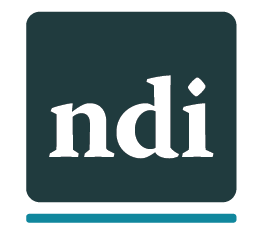April is Financial Capability Month. As a champion of economic empowerment, financial education, asset development and financial stability for all persons with disabilities, National Disability Institute (NDI) will devote Financial Capability Month to sharing resources that highlight the importance of financial literacy in creating a more equitable society — because #FinancialInclusion means #FinancialCapability.
NDI is committed to the intentional inclusion of underrepresented groups, with a particular focus on Black, Indigenous and Latinx individuals with disabilities. A society in which all people with disabilities have the same opportunities to achieve financial stability and independence as people without, requires that we continue to be inclusive of race, ethnicity and disability in our research, programs, leadership, partnerships and policy development.
These efforts build on each other.
This infographic provides an overview of the comparisons between households with and without a disability, and Black and Latinx households. The NDI research brief: Race, Ethnicity and Disability: The Financial Impact of Systemic Inequality and Intersectionality shares a historical context for understanding intersectionality, the financial impacts on Black, Indigenous, and people of color (BIPOC) individuals with disabilities and presents a set of conclusions and recommendations that should involve all of us as individuals, families, organizations, institutions and government. The Center for Disability-Inclusive Community Development (CDICD) works to improve the financial health and well-being of low- and moderate-income (LMI) individuals with disabilities and their families by increasing awareness and usage of the opportunities and resources available under the Community Reinvestment Act (CRA). This CDICD Quick Reference Guide on Disability-Inclusive Community Development explores how to assure that people with disabilities are included in community development activities. For overview of the racial gaps in financial outcomes and the racial wealth divide and a discussion on solutions from thought leaders in community development and the disability community, view the NDI webinar, “Race, Ethnicity and Disability: the Financial Impact of Systemic Inequality and Intersectionality.”
Across all racial and ethnic groups, households with a working-age member with a disability have lower net worth compared to households without a member who has a disability. #FinancialInclusion means #FinancialCapability, so the ABLE National Resource Center (ABLE NRC) has created a BIPOC Outreach Toolkit to help agencies, organizations and community groups build awareness of the game-changing ability of ABLE accounts for members of minority populations.
#FinancialCapability means #FinancialInclusion for all. This Financial Capability Month, commit to exploring and sharing what exactly “for all” means. To learn more about NDI’s research, employment and financial inclusion projects with an emphasis on racial and ethnic inclusion, visit NDI’s Race, Ethnicity and Disability webpage.
